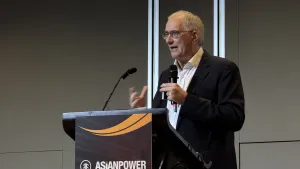Social protection benefits accessed by only 44.1% in Southeast Asia
Efforts to bridge the digital divide and enhance social protection coverage in Southeast Asia spotlighted amid lagging global averages.
In Southeast Asia, a mere 44.1% of the population has access to at least one social protection benefit, a figure that stands in contrast to the growing emphasis many governments in the region are placing on expanding such coverage.
Markus Ruck, Social Protection Specialist at International Labour Organization Bangkok, emphasised the need for inclusive digitalization strategies to ensure equitable access to social protection.
Ruck highlighted various approaches to address the digital divide, a key barrier to accessing social protection benefits. "Investing in internet accessibility in remote areas, enhancing digital literacy, and providing user-friendly online services are crucial steps," he said.
He stressed the importance of partnerships between community organisations, private sectors, NGOs, and government bodies to reach marginalised groups effectively.
Tailoring solutions to specific needs, such as for the elderly, disabled, and low-income households, is also critical. He suggested offering services in multiple languages and establishing feedback mechanisms to refine these services continually.
"Making digital devices and services more affordable, especially for economically disadvantaged groups, is essential," Ruck added.
Despite these efforts, the region still lags behind the global average in social protection coverage. "The region's low coverage rate reflects a historical lack of prioritisation in many governments, with an average public expenditure on social protection of only 7.5% of GDP," Ruck explained.
This figure is significantly lower than the global average of 12.9%. A contributing factor is the high percentage of informal workers in the region, accounting for 68% of the workforce, who often lack access to social protection.
"While technology is a crucial enabler, enhancing the efficiency and accessibility of social protection programs, it is not a replacement for policy," Ruck also said.
He cited that technology's strengths lie in streamlining administrative processes, reducing costs and errors in benefit delivery, and facilitating informed decision-making through continuous program monitoring.
However, Ruck cautioned against over-reliance on technology. "Not everyone has equal access to technology, which can exacerbate inequalities," he noted. He emphasised that social protection policies require a human-centred approach, considering social complexities and the need for tailored solutions. Additionally, ethical standards and data privacy are critical considerations that technology alone cannot address.










